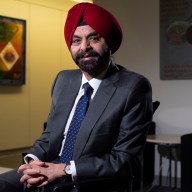Clayton M. Christian is best known for the business theory of “disruptive innovation,” which he developed in the’ 90s while teaching at Harvard. “Disruptive innovation” refers to product innovation that typically occurs on the low-end of the market, where market pressures force competitors to find new ways of creating a product or delivering a service.
Now he wants to bring this theory to higher education. His new book, “The Innovative University: Changing the DNA of Higher Education From the Inside Out,’” is co-authored with Brigham Young University-Idaho administrator, Henry J. Eyring. The book focuses on the transformation of Mormon Church-owned Ricks College into BYU-Idaho, a process that started in 2000.
From the start, BYU-Idaho implemented some radical changes: They axed all of their athletic programs. They offered classes year-round. They did not seek research dollars or attempt to create graduate programs. They expanded online learning to a wider population.
For Christian and Eyring, this is the blueprint for better undergraduate education in the US; it’s the “disruptive innovation” on the low-end of the market that will eventually transform the whole.
“In the 1970s, the Carnegie Foundation created a classification system: They distinguished top-tier research universities from non research-based schools. Quite uniformly, that classification became a ladder,” says Eyring. “It supercharged the desire to become bigger and better. Grant-making agencies tied funding to this classification system, so schools naturally put greater emphasis on graduate studies. That process has led to great research, but it’s also increased the price of a college education, and left fewer institutions focused on being affordable and accessible to undergrads.”
Staff shake-ups
In an age of rapidly increasing adjunct faculty and decreasing full-time teaching jobs, the authors actually call for more adjuncts in the classroom — a segment that may not sit well with educators.
“The current model has locked out a whole lot of students,” says Eyring. “There’s a lot of people that President Obama would like to educate, and we need to do that. We also have a lot of grad students hitting the market with nowhere to work. What stands in the way of the supply and demand is a model of education that needs to be revisited.”
















